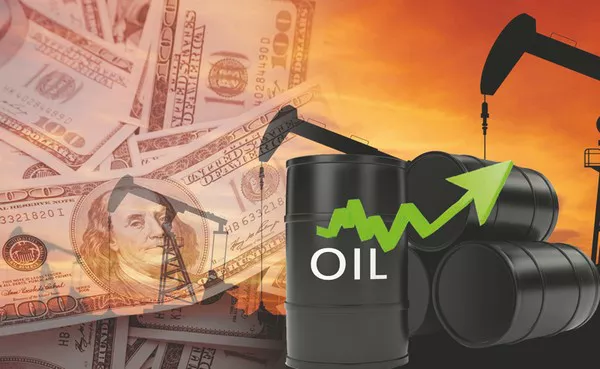In the complex world of commodities trading, oil futures options play a crucial role in managing risk and speculating on price movements. Understanding how these financial instruments work is essential for traders and investors looking to navigate the energy markets effectively. This comprehensive article explores the mechanics of oil futures options, their uses, strategies, and key considerations.
Introduction to Oil Futures Options
1. What are Oil Futures Options?
Oil futures options are financial contracts that give the holder the right, but not the obligation, to buy or sell a specific quantity of crude oil futures at a predetermined price (strike price) on or before the expiration date of the option contract. These options are traded on commodity exchanges alongside oil futures contracts and provide flexibility for hedging and trading strategies.
2. Key Components of Oil Futures Options
Underlying Asset: Oil futures options derive their value from underlying crude oil futures contracts, which represent a standardized quantity and quality of crude oil.
Strike Price: The price at which the option holder can buy (call option) or sell (put option) the underlying futures contract.
Expiration Date: The date on which the option contract expires, after which it becomes invalid.
Premium: The price paid by the option buyer to the option seller for acquiring the rights associated with the option.
3. Types of Oil Futures Options
Call Options: Give the holder the right to buy the underlying oil futures contract at the strike price before or on the expiration date.
Put Options: Give the holder the right to sell the underlying oil futures contract at the strike price before or on the expiration date.
Mechanics of Oil Futures Options
1. Option Buyer vs. Option Seller
Option Buyer: Pays a premium to acquire the right to buy (call option) or sell (put option) oil futures at the strike price. The buyer benefits if the market price of oil moves favorably relative to the strike price.
Option Seller (Writer): Receives the premium from the option buyer and has the obligation to sell (call option) or buy (put option) oil futures if exercised by the buyer. Sellers profit from the premium but face potential losses if market movements are unfavorable.
2. Settlement Methods
Physical Settlement: Involves the actual delivery of the underlying crude oil futures contract upon exercise of the option.
Cash Settlement: The difference between the strike price and the settlement price of the underlying futures contract is settled in cash upon exercise.
3. Option Expiration and Exercise
Expiration: Options have expiration dates, typically monthly or quarterly. After expiration, options become worthless if not exercised.
Exercise: Option holders can exercise their rights at any time before expiration (American options) or only on the expiration date (European options).\
See Also: Is It Good to Invest in Gold Futures?
Uses of Oil Futures Options
1. Hedging
Producer Hedging: Oil producers can use put options to protect against declining oil prices, ensuring a minimum price for their future production.
Consumer Hedging: Oil consumers, such as airlines or manufacturing companies, may use call options to hedge against rising oil prices, locking in purchase prices.
2. Speculation
Bullish Strategies: Traders expecting oil prices to rise may buy call options to profit from potential price increases.
Bearish Strategies: Traders anticipating oil prices to fall may buy put options or sell call options to profit from price declines.
3. Risk Management
Portfolio Protection: Investors with exposure to oil-related assets can use options to mitigate downside risk in their portfolios.
Volatility Trading: Options can be used to capitalize on expected changes in oil price volatility.
Strategies for Trading Oil Futures Options
1. Basic Strategies
Buying Call Options: Profiting from upward price movements in oil futures.
Buying Put Options: Benefiting from downward price movements in oil futures.
2. Advanced Strategies
Straddles: Simultaneously buying a call option and a put option with the same strike price and expiration date to profit from significant price movements.
Spreads: Combining multiple options contracts to manage costs and potential profits.
3. Option Greeks
Delta: Measures the sensitivity of option price to changes in the price of the underlying oil futures.
Gamma: Indicates the rate of change in delta relative to changes in the price of the underlying asset.
Theta: Measures the rate of decline in the option’s value with the passage of time.
Vega: Reflects the sensitivity of the option’s price to changes in volatility of the underlying asset.
Risks and Considerations
1. Price Volatility
Oil prices are influenced by various factors, including geopolitical events, economic data, and supply-demand dynamics, which can lead to significant price swings.
2. Time Decay
Options lose value as they approach expiration, impacting the profitability of option strategies.
3. Liquidity
Options with low trading volume and open interest may have wider bid-ask spreads, potentially affecting execution prices.
Conclusion
Oil futures options provide traders and investors with versatile tools for managing risk, speculating on price movements, and enhancing portfolio strategies in the dynamic energy markets. By understanding the mechanics of oil futures options, employing appropriate trading strategies, and considering market dynamics and risk factors, participants can effectively navigate this complex financial landscape. Whether used for hedging production, protecting portfolios, or capitalizing on market opportunities, oil futures options play a vital role in the global commodities market, offering both opportunities and challenges for market participants.


